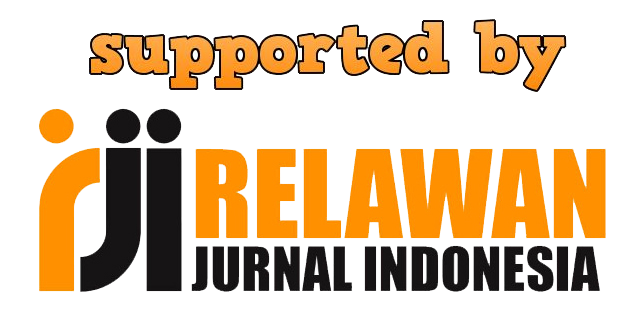The Conflict and Balance of Work-Family during the COVID-19 Pandemic
DOI:
https://doi.org/10.23887/jish.v13i1.50101Keywords:
Work-family Conflict, Family-work Conflict, Work and Life Balance, PandemicsAbstract
Everyday activities have become very limited during the COVID-19 outbreaks in most countries. Many companies have established work-from-home (WFH) policies to reduce transmission risk. Balancing work and private life sometimes becomes challenging, which has worsened during the pandemic. This research aimed to observe the influence of work-life conflict (WFC) consisting of work impeding family (WIF) and family impeding work (FIW) on Work and Life Balance (WLB) and ascertain gender differences in WLB. Data were collected from 100 respondents (50 men and 50 women) through questionnaires. The inclusion criteria were married couples with occupations, had children and were then doing WFH during an outbreak. This research adopted quantitative methods. Data were analyzed using a multiple-regression test and an independent t-test. The outcomes indicated that the WIF conflict had no statistically remarkable influence on the WLB of workers during the COVID-19 pandemic. The FIW conflict has had a positive and statistically remarkable influence on the WLB of workers during the COVID-19 pandemic. Female workers experience a more significant imbalance in the middle of family and work than that experienced by male workers because of their WFH during the COVID-19 pandemic.
References
Aryee, S., Srinivas, E. S., & Tan, H. H. (2005). Rhythms of life: anteced-ents and outcomes of work-family balance in employed parents. Journal of applied psychology, 90(1), 132 – 146. https://doi.org/10.1037/0021-9010.90.1.132.
Bhumika, B. (2020). Challenges for WLB during COVID-19 induced nationwide lockdown: Exploring gender distinction in emotional exhaustion in the Indian setting. Gender in Organizement, 35(7/8), 705–718. https://doi.org/10.1108/GM-06-2020-0163
Carlson, D. S., Derr, C. B., & Wadsworth, L. L. (2003). The effects of internal career orientation on multiple dimensions of WFC. Journal of Family and Economic Issues, 24(1), 99–116. https://doi.org/10.1023/A:1022487121260
Carlson, D. S., Kacmar, K. M., & Williams, L. J. (2000). Construction and initial validation of a multidimensional measure of WFC. Journal of Vocational Behavior, 56(2), 249–276. https://doi.org/10.1006/jvbe.1999.1713
Carlson, D.S., Grzywacz, J.G., Kacmar, K.M. (2010). The correlation of schedule Flexibility and outcomes via the Work-family interface. Journal of Organizerial Psychology, 25(4), 330-355. https://doi.org/10.1108/02683941011035278
Clark, S. C. (2000). Work/family border theory: A new theory of work/family balance. Human Relations, 53(6), 747–770. https://doi.org/10.1177/0018726700536001
Deshmukh, K. (2020). Work and life balance research focused on working women. International Journal of Engineering Technologies and Organizement Research, 5(5), 134–145. https://doi.org/10.29121/ijetmr.v5.i5.2018.236
Dilmaghani, M., & Tabvuma, V. (2019). The gender gap in work–life balance satisfaction across occupations. Gender in Management, 34(5), 398–428. https://doi.org/10.1108/GM-09-2018-0109
Doble, N., & Supriya, M. V. (2010). Gender differences in the perception of work and life balance. Managing Global Transitions: International Research Journal, 8(4), 331–342.
Eby L.T., Casper W.J., Lockwood A.,, Bordeaux C., & Brinleya A. (2005). Work and family research in IO/OB: Content analysis and review of the literature (1980–2002). Journal of Vocational Behavior, 66(1), 124–197.
Feng, Z., & Savani, K. (2020). COVID-19 created a gender gap in perceived work productivity and occupation satisfaction: Implications for dual-career parents working from home. Gender in Organizement: An International Journal, 35(7/8), 719–736. https://doi.org/10.1108/GM-07-2020-0202
Frone, M. R. (2003). Work-family balance. In J. Quick & L. Tetrick (Eds.), Handbook of occupational health psychology (1st ed., pp. 143–162). Washington, D.C.: American Psychological Association.
Fub I., Nübling M., Hasselhorn H.M., Schwappach D., & Rieger M.A. (2008). Working conditions and work family conflict in German hospital physicians: Psychosocial and organizational predictors and consequences. BMC Public Health, 8(1), 353.
Garg, M., & Dawra, S. (2017). Work life balance and women workers. International Journal of Applied Business and Economic Research, 15(22), 233–246.
Ghayyur M., & Jamal W. (2012). A case of workers ’ turnover intention. International Journal of Social Science and Humanity, 2(3, May), 168–172.
Ghozali, I. (2011). Aplikasi Analisis Multivariate Dengan Program IBM SPSS19 [Analytics Application Multivariate With IBM Programs SPSS19]. Semarang: Badan Penerbit Universitas Diponegoro.
Ghozali, I., & Latan, H. (2015). Partial least square, konsep, teknik dan aplikasi menggunakan program SmartPLS 3.0 untuk penelitian empiris [Partial least squares, concepts, techniques and applications using the SmartPLS 3.0 program for empirical research]. Semarang: Universitas Dipenegoro.
Gragnano, A., Simbula, S., & Miglioretti, M. (2020). WLB : Weighing the importance of work–family and work–health balance. International Journal of Environmental Research and Public Health, 17(3), 907. https://doi.org/10.3390/ijerph17030907
Greenhaus, J. H., & Beutell, N. J. (1985). Sources of incompatibility in the middle of family and work roles. Academy of Organizement Review, 10(1), 76–88.
Greenhaus, J. H., & Allen, T. D. (2011). Work-family balance: A review and extension of the literature. In J.C.Quick,& L.E. Tetrick (Eds.), Handbook of occupational health psychology (vol. 2, pp. 165 -183). Washington, DC: American Psychological Association.
Gunaji, M., S. (2017). A Study of Gender Differences in the Perception of Work Life Balance. International Journal of Economics and Management Studies, 4(11), 48–52. https://doi.org/10.14445/23939125/ijems-v4i11p108
Jindal, A., & Agarwal, S. (2020). Role of gender in work and life balance. 24, 15–18. https://doi.org/10.15439/2020KM31
Kahn, R., Wolfe, D., Quinn, R., Snoek, J., & Rosenthal, R. (1964). Organizational stress. New York: Wiley.
Kang L.S.,, & Sandhu R.S. (2012). Influence of stress on health: A research of bank branch organizers in India. Global Business Review, 13(2), 285–296.
Karkoulian, S., Srour, J., & Sinan, T. (2016). A gender perspective on work and life balance, perceived stress, and locus of control. Journal of Business Research, 69(11), 4918–4923. https://doi.org/10.1016/j.jbusres.2016.04.053
Kengatharan, N. (2020). Shouldering a double burden: The cultural stigma of the dogma of gender role ideology and its influence on WFC. Journal of Advances in Organizement Research, 17(5), 651–667. https://doi.org/10.1108/JAMR-03-2020-0033
Kulik, L. (2019). Work–home conflict, antecedents and outcomes: A life-stage perspective among working parents. Career Development International, 24(3), 257–274. https://doi.org/10.1108/CDI-06-2018-0177
Kumarasamy, M. M., Pangil, F., & Isa, M. F. M. (2016). The influence of emotional intelligence on police officers’ WLB : the moderating role of organizational support. International Journal of Police Science & Organizement, 2016, 1 – 11.
Lapierre, L. M., Spector, P. E., Allen, T. D., Poelmans, S., Cooper, C. L., O’Driscoll, M. P., … Kinnunen, U. (2008). Family-supportive organization perceptions, multiple dimensions of WFC, and worker satisfaction: A test of model across five samples. Journal of Vocational Behavior, 73(1), 92–106. https://doi.org/10.1016/j.jvb.2008.02.001
Liu, D., Wu, Y., Jiang, F., Wang, M., Liu, Y., & Tang, Y. L. (2021). Gender Differences in Job Satisfaction and Work-Life Balance Among Chinese Physicians in Tertiary Public Hospitals. Frontiers in Public Health, 9(May), 1–8. https://doi.org/10.3389/fpubh.2021.635260
Masita, T. S., Delyara, D. A., Fernando, M. L., Himmawan, G., & Claudianty, G. S. (2019). WFC dan work and life balance pada prajurit wanita TNI AL di Surabaya. Fenomena, 28(1), 39–44. https://doi.org/10.30996/fn.v28i1.2454
Maxwell, G. A., & McDougall, M. (2004). Work – life balance: Exploring the connections in the middle of levels of influence in the UK public sector. Public Organizement Review, 6(3), 377–393. https://doi.org/10.1080/1471903042000256547
McCarthy, A., Darcy, C., & Grady, G. (2010). Work-life balance policy and practice: Understanding line manager attitudes and behaviors. Human Resource Management Review, 20(2), 158–167. https://doi.org/10.1016/J.HRMR.2009.12.001
McElwain, A. K., Korabik, K., & Rosin, H. M. (2005). An examination of gender differences in WFC. Canadian Journal of Behavioural Science/Revue Canadienne Des Sciences Du Comportement, 37(4), 283–298. https://doi.org/10.1037/h0087263
Mulik, S. G. (2017). A research of gender differences in the perception of work life balance. International Journal of Economics and Organizement Researches, 4(11), 48–52. https://doi.org/10.14445/23939125/IJEMS-V4I11P108
Mungkasa, O. (2020). Bekerja dari rumah (working from home/WFH): Menuju tatanan baru era pandemi COVID 19 [Working from home (working from home/WFH): Towards a new order in the era of the COVID-19 pandemic]. Jurnal Perencanaan Pembangunan: The Indonesian Journal of Development Planning, 4(2), 126–150. https://doi.org/10.36574/jpp.v4i2.119
Pace, F., & Sciotto, G. (2022). Gender differences in the relationship between work–life balance, career opportunities and general health perception. Sustainability (Switzerland), 14(1), 1–10. https://doi.org/10.3390/su14010357
Pasewark, W. R., & Viator, R. E. (2006). Sources of WFC in the accounting profession. Behavioral Research in Accounting, 18(1), 147–165. https://doi.org/10.2308/bria.2006.18.1.147
Powell, G. N., & Greenhaus, J. H. (2006). Managing incidents of WFC: A decision-making perspective. Human Relations, 59(9), 1179–1212. https://doi.org/10.1177/0018726706069765
Rini, R., Yustina, A. I., & Santosa, S. (2020). How work family conflict, work and life balance, and occupation performance connect: Evidence from auditors in public accounting firms. Jurnal ASET (Akuntansi Riset), 12(1), 144–154.
Robbins, S. P., & Coulter, M. (2012). Organizement. New Jersey: Person Education.
Sharabi, M. (2017). Work, family and other life domains centrality among organizers and workers according to gender. International Journal of Social Economics, 44(10), 1307–1321. https://doi.org/10.1108/IJSE-02-2016-0056
Shockley, K. M., Shen, W., DeNunzio, M. M., Arvan, M. L., & Knudsen, E. A. (2017). Disentangling the correlation in the middle of gender and WFC: An integration of theoretical perspectives using meta-analytic methods. Journal of Applied Psychology, 102(12), 1601–1635.
Spagnoli, P., Lo Presti, A., & Buono, C. (2019). The “dark side” of organisational career growth: Gender differences in WFC among Italian employed parents. International Journal of Manpower, 41(2), 152–167. https://doi.org/10.1108/IJM-05-2018-0145
Sundaresan, S. (2014). Work and life balance–implications for working women. OIDA International Journal of Sustainable Development, 7(7), 93–102.
Takahashi, A. R. W., Lourenço, M. L., Sander, J. A., & Souza, C. P. da S. (2014). Competence development and WFC: Professors and gender. Gender in Organizement: An International Journal, 29(4), 210–228. https://doi.org/10.1108/GM-12-2012-0100
Talukder, A. K. M., Vickers, M., & Khan, A. (2018). Supervisor support and work and life balance: Impacts on occupation performance in the Australian financial sector. Personnel Review, 47(3), 727–744. https://doi.org/10.1108/PR-12-2016-0314
Toth, H. (2005). Gendered dilemmas of the work‐life balance in Hungary. Women in Organizement Review, 20(5), 361–375. https://doi.org/10.1108/09649420510609195
Umar, H. (2013). Metode Penelitian untuk Skripsi dan Tesis. Jakarta: Rajawali
Wahid, U., & Lancia, F. (2018). Pertukaran peran domestik dan publik menurut perspektif wacana sosial halliday [Exchange of domestic and public roles according to the perspective of halliday's social discourse]. Mediator: Jurnal Komunikasi, 11(1), 106–118. https://doi.org/10.29313/mediator.v11i1.3180
Watai, I., Nishikido, N., & Murashima, S. (2008). Gender distinction in work‐family conflict among japanese information technology engineers with preschool children. Journal of Occupational Health, 50(4), 317–327. https://doi.org/10.1539/joh.L7124
Williamson, R. L., & Clark, M. A. (2016). The work-family interface: An Introduction. Academy of Organizement Learning & Education, 15(2), 394–397. https://doi.org/10.5465/amle.2016.0100
Zhao, J., Settles, B. H., & Sheng, X. (2011). Family-to-work conflict: Gender, equity and workplace policies. Journal of Comparative Family Researches, 42(5), 723–738.
Downloads
Published
Issue
Section
License
Copyright (c) 2024 Sulistiowati Sulistiowati

This work is licensed under a Creative Commons Attribution-ShareAlike 4.0 International License.
Authors who publish with the Jurnal Ilmu Sosial dan Humaniora agree to the following terms:
- Authors retain copyright and grant the journal the right of first publication with the work simultaneously licensed under a Creative Commons Attribution License (CC BY-SA 4.0) that allows others to share the work with an acknowledgment of the work's authorship and initial publication in this journal.
- Authors are able to enter into separate, additional contractual arrangements for the non-exclusive distribution of the journal's published version of the work (e.g., post it to an institutional repository or publish it in a book), with an acknowledgment of its initial publication in this journal.
- Authors are permitted and encouraged to post their work online (e.g., in institutional repositories or on their website) prior to and during the submission process, as it can lead to productive exchanges, as well as earlier and greater citation of published work. (See The Effect of Open Access)


.png)
.png)













